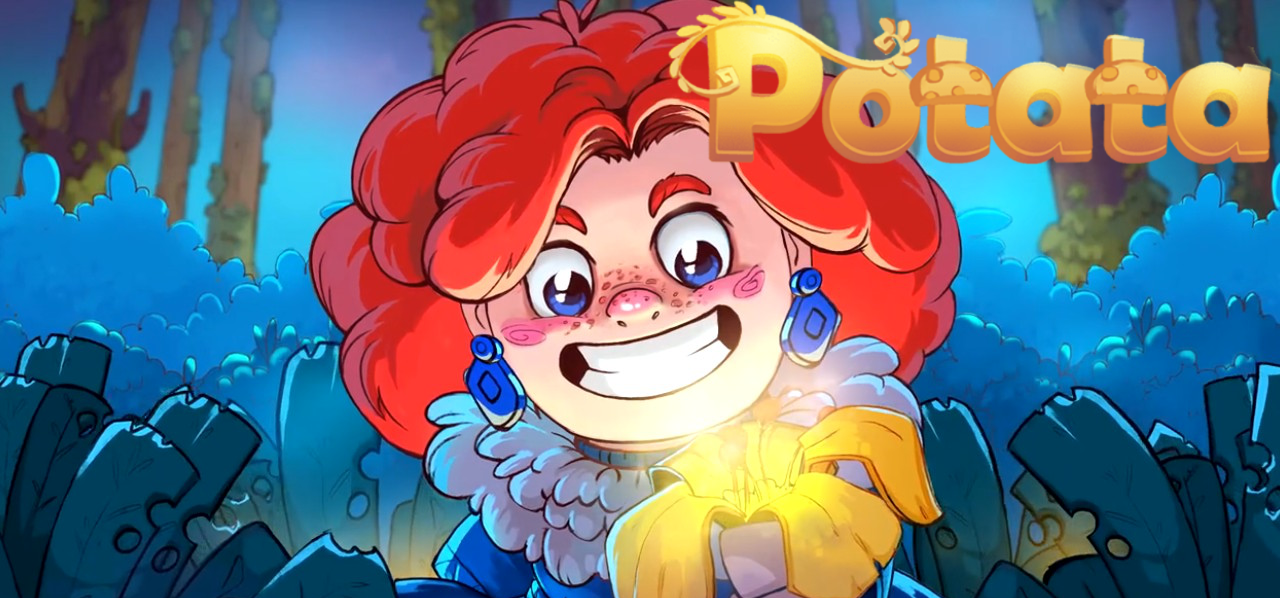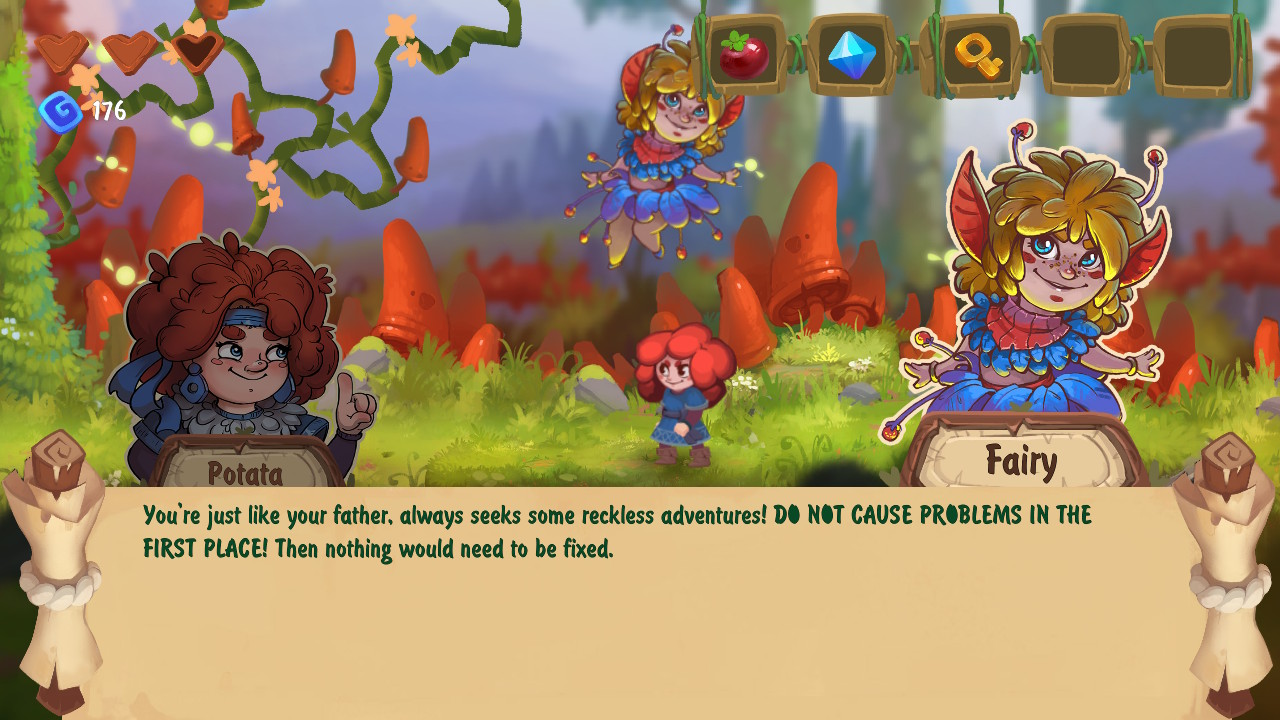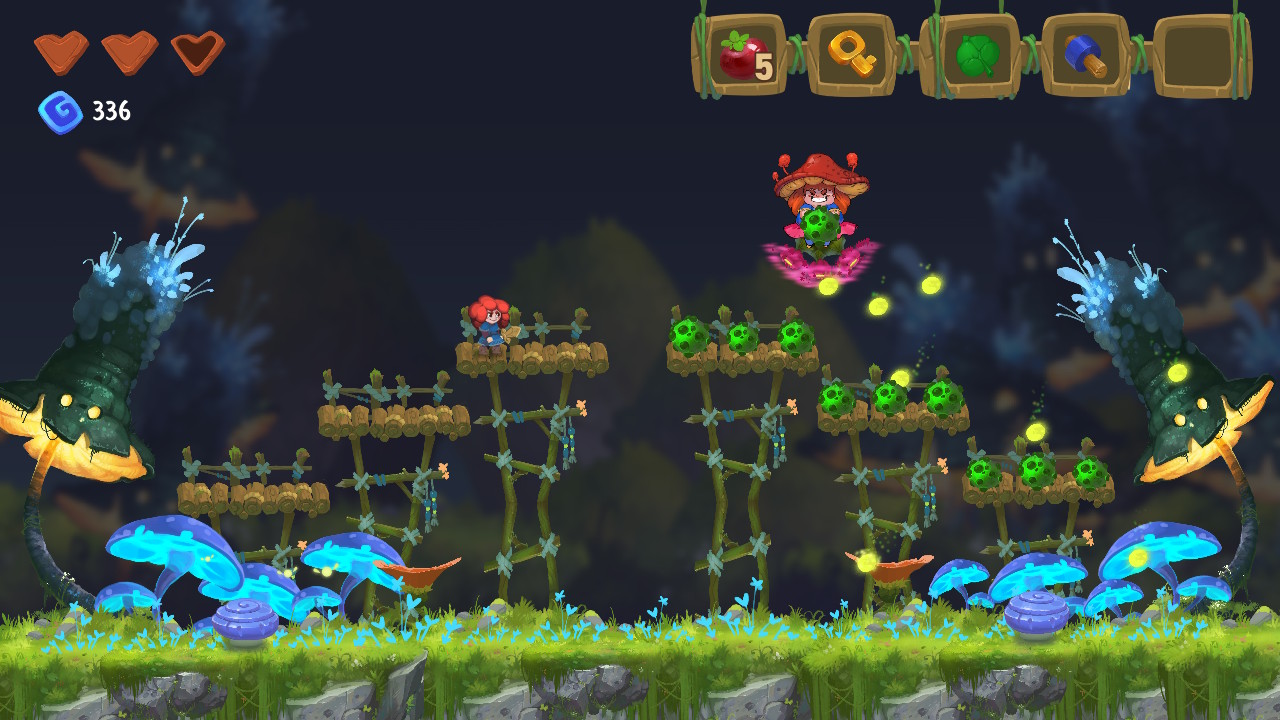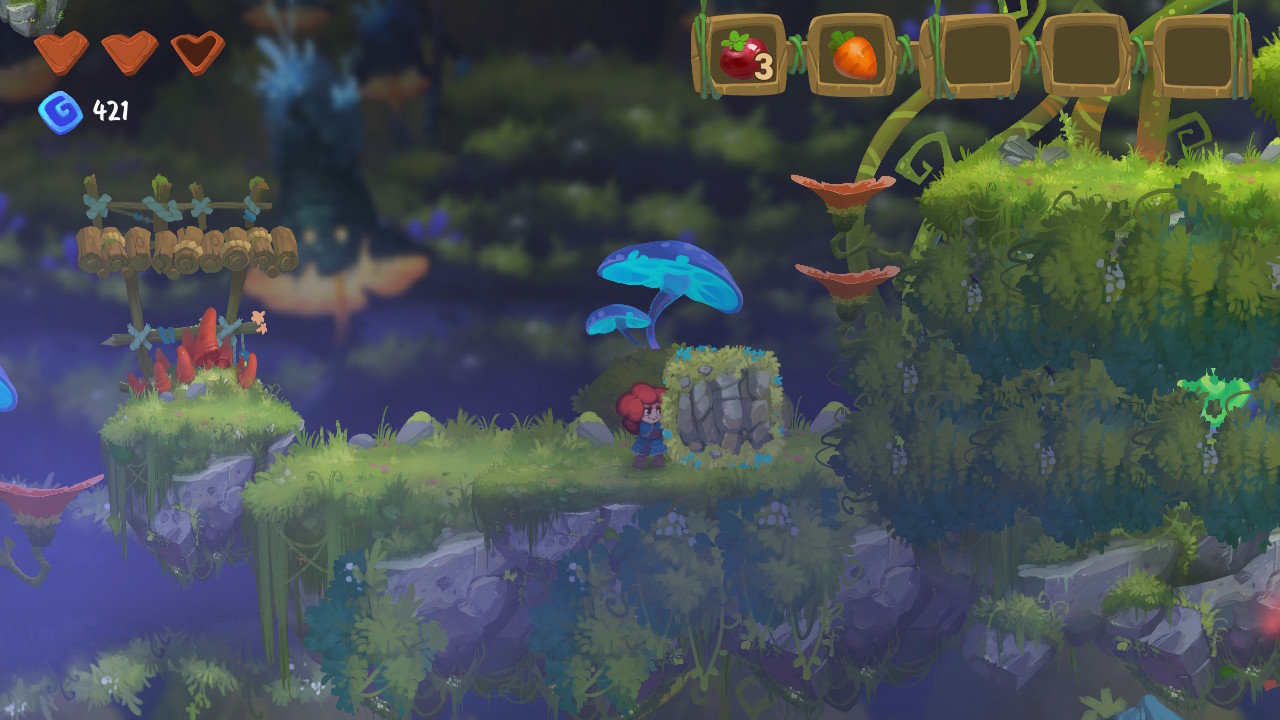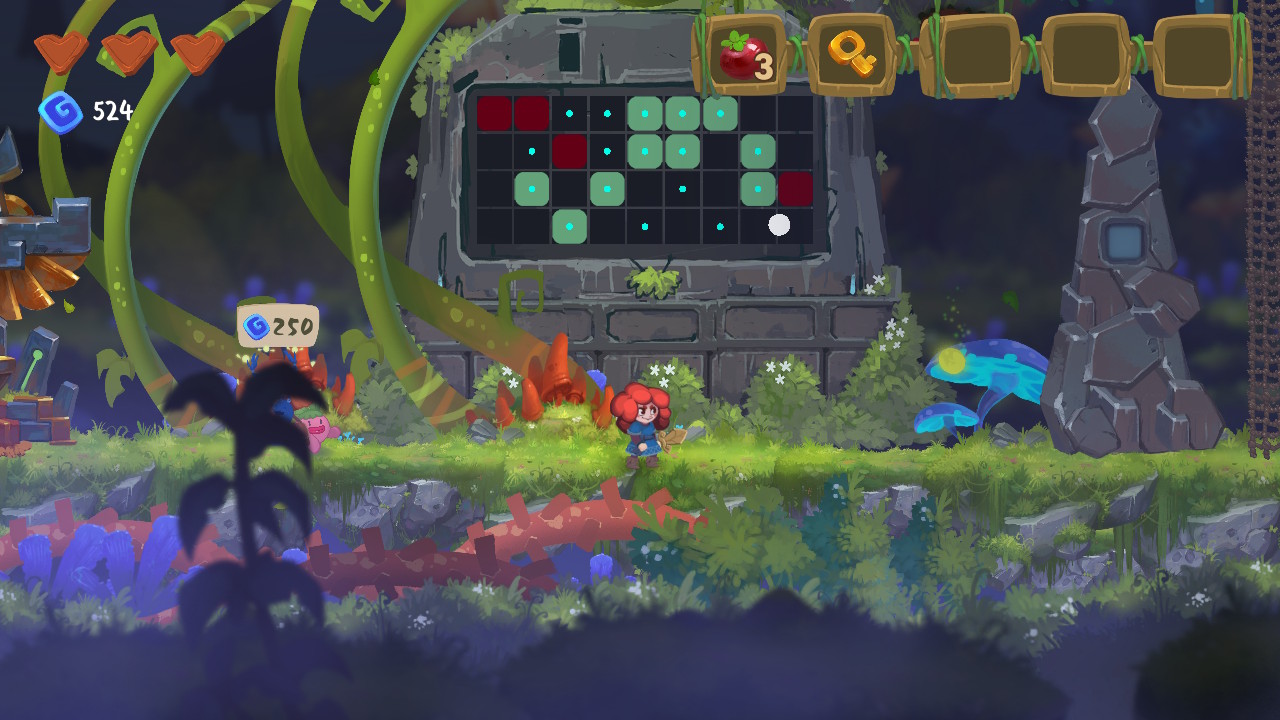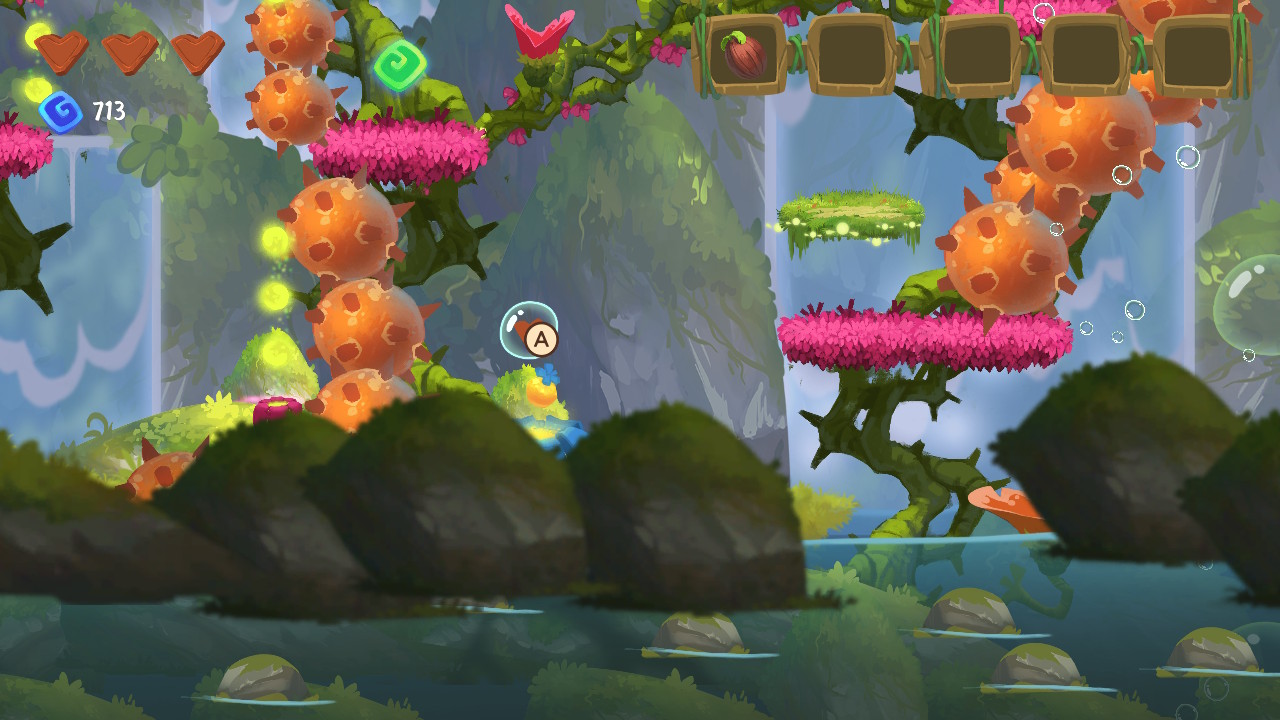Whaaat, I totally didn’t pick the pretty flower *sweats*
Type: Single Player
Genre: Puzzle Platformer
Developer: Potata Company
Publisher: Potata Company
Release date: June 6, 2020


In Potata: Fairy Flower, you jump into the shoes of a young witch named Potata. One day, after having a dream about adventuring out into the world, she wakes up to her totem fox feeling sick. After asking her mom on how to help her totem fox, and getting a chore to collect some dewberries for a pie, she must find some special leaves. Of course, not everything goes as planned. After going into a random portal, Potata follows a firefly to a beautiful yellow flower. She picks the flower in her awe without realizing that a fairy resided in it and makes the fairy and the forest angry. To make things right, Potata must collect all the petals that strangely flew off after it was picked. At least Potata will finally get that adventure she’s been dreaming and waiting for.
To get the petals, dewberries, and leaves, you’ll need to travel to various places by getting a portal there. Gameplay is pretty straightforward as you’ll mainly be platforming your way through each area. To encourage you to jump to other platforms you wouldn’t have, blue gems are scattered around. These gems are the game’s currency, which can be used to help you out if you can afford it. Though, various hazards are littered throughout so it’s not so easy. There are various spiked balls that’ll block your way or require you to jump over as well as enemies. After the prologue, you do get a sword to help fend off any enemies, though you pretty much have to be right up on them to get a hit in. There are two different types of enemies, apart from how different they look and behave of course. There are enemies that are gone for good once you defeat them and enemies that are temporarily stunned for a second or two. Though, there are hazards that will only take one hit to end you like the red hot variant of the spiked balls and water.
Some boss fights are sprinkled in and these were honestly my favorite parts. The bosses requires you to put your dodging skills to the test, go against a threat that you were facing the whole level, and make decisions on the fly. Of course, there are phases that you can prepare for if you die a lot, but it’s random enough to maybe make you frantic.
Checkpoints are also numerous throughout each area, usually put in after a particularly hard section or after a puzzle. Once you pass it, it’ll activate to save your place and heal your health. However, if you want to activate it again, like if you don’t want to recollect everything after dying for the tenth time, it’ll cost you some blue gems.
The puzzles here are pretty basic. Most puzzles you’ll come across will basically require you to explore the whole area you’re in to find an item you need. Then, pick out and use the item that you need to progress after, for example, encountering a carnivorous plant. Or maybe you need to push a boulder to unlock an area (whether it’s used as a kind of key or just need to jump on it to reach a high platform) or figure out a way to push it somewhere else. One of the more memorable puzzle is one where you find multiple levers of different colors and then put each lever in a certain position to continue. While half the time there is something indicating what position each need to be in, there were some that I couldn’t find the clue and just had to keep messing with all the levers.
Other than the puzzles that require you to find an item while exploring, there are two puzzle types that do not fit. The first is a puzzle where you need to fit a handful of pre-determined Tetris pieces into a specified shape, like a butterfly. These are fairly easy to figure out, with the last one you’ll come across being the real challenge that’ll probably get you to use that reset button. The other is my dreaded puzzle enemy. That being the one light puzzle where each press turns off or on other lights around it. In the case for Potata: Fairy Flower, you work with an rectangular area where you need to light up specific squares indicated by dots, while also making sure no red lights are present. Thankfully, you do get the option to pay some blue gems to get a hint on which squares you need to press to move forward. I do recommend trying to solve it yourself before paying for the hint (personally, it was when I was starting to get annoyed).
Once you get to, I’d say, almost halfway through the game, a challenge area will unlock in town. This has six challenge areas that you can be taken to by a portal. However, these portals are unlocked based on how far you’re in the game. These challenges, well, challenges you to complete a short, but tricky, level without dying. These levels are optional and you’ll only be granted a crystal for each challenge completed.
In terms of performance, I played the whole game in handheld mode and there wasn’t any issues. There were some spots where I did notice some slight drops when jumping, but it’s not bad enough to where it’ll hinder your gameplay. The English translation is also weird in places.
Verdict
Overall, Potata: Fairy Flower is just an alright game. The negatives towards the game (weird translation, no explanation for how to solve most puzzles, it’s sometimes tough to hit enemies, climbing ladders is pretty slow) are overall minor and the game is enjoyable enough where I can see fans of puzzle platformers enjoying it as well. Considering the game’s price, if you just want to take a break with a game that’ll take a couple afternoons to complete and are looking for a puzzle platformer in particular, Potata: Fairy Flower is a good choice to keep you company.

